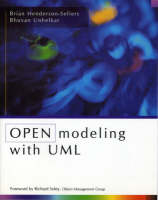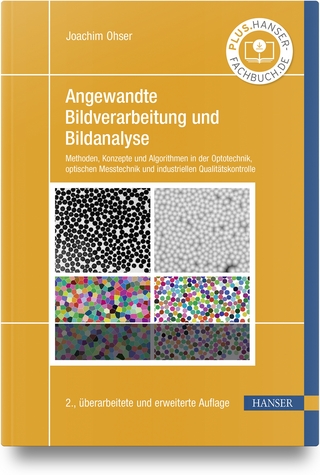
OPEN Modeling with UML
Addison Wesley (Verlag)
978-0-201-67512-2 (ISBN)
- Titel ist leider vergriffen;
keine Neuauflage - Artikel merken
OPEN Modeling with UML
Brian Henderson-Sellers and Bhuvan Unhelkar
ACM Press
“As you read this book you will find a well-defined and well-honed methodology for managing your own software development processes. Clear explanations of fundamentally difficult concepts make this book a major contribution to the literature and to future standardization in this area” – Richard Soley, Chairman and CEO, Object Management Group.
“I have seen the software industry evolve over the past 33 years and in my opinion process discipline has been one of our most significant lacunae. OPEN with UML provides an extremely solid and powerful base for promoting the software process discipline, offering immense value to the still rapidly growing software industry. The new millennium in my home country of India, as well as worldwide, will benefit greatly from a simple and lucidly written work such as this.” - Prabhat (S.D.)Pradhan, CEO, TATA Technologies India.
OPEN (Object-oriented Process, Environment and Notation) addresses a number of key concerns facing IT professionals today. How do you deal with challenges encountered in migration, component integration, and Internet-based development, as well as higher-level process and project management issues? OPEN is a tailorable, complete ‘process environment’ which gives you the power to easily customize the development process to precisely fit with your individual organization’s needs.
This introductory-level book guides you through the basic concepts that you will need to master for using OPEN process in industry, and to understand the use of the Unified Modeling Language (UML) as its notational element. The authors adopt a strong practical approach, drawing on their extensive experience and developing their arguments around two detailed case studies. Primarily aimed at software developers needing to use an adaptable process to model with UML, this book will also help project managers and quality managers appreciate the use of a software development process together with a standardized notation.
Structure of the book:
Chapter 1 overviews the OPEN process and the appropriate use of the UML within it
Chapter 2 introduces the key aspects of UML, primarily focusing on the notational element
Chapter 3 covers how OPEN supports modeling and discusses the modeling artifacts such as Tasks and Techniques, the tools and processes with which to build software complemented by UML as the notation
Chapters 4 and 5 consist of in-depth case studies: a library management system which illustrates how to use OPEN in a responsibility-driven style of development; and a small business loan system, an example of a use-case-driven large-scale software project for the Web
Additional Features:
step-by-step plan for using the book as the foundation for a two day seminar course (or three day course in conjunction with the use of a CASE tool) for industry training or teaching to senior-level students
web-site resource base at http://www.open.org.au
appendix demonstrating the use of a process tool in applying the OPEN process
About the Authors Brian Henderson-Sellers Brian Henderson-Sellers is Professor of Computer Science (Object Technology) at Swinburne University, Director of the Centre for Object Technology Applications and Research in Victoria and also a founder member of the OPEN Consortium. He is an internationally known methodologist in the field of Object Technology, and has authored many works on object-oriented metrics, metamodeling and methodology, including the companion volume The OPEN Process Specification.
Table of Contents
CONTENTS 1. Introduction to OPEN.
Abstract.
What is OPEN?
Why is OPEN a tailorable process framework?
What is UML?
Tying It All Together: OPEN with UML.
Summary of Key Points.
Discussion Topics.
Notes.
2. The Modeling Language to be Used: UML.
Abstract.
History of UML.
Static Architectural Elements.
Architectural Diagram Types.
Stereotypes.
Relationships.
Notation.
Further Uses of Associations.
Use Cases.
Interaction Diagrams.
Statechart Diagrams.
Summary of Key Points.
Discussion Topics.
Bibliographic Notes.
3. OPEN's Modeling Tasks and Techniques Explained.
Abstract.
Introduction.
Object Identification and Documentation.
Responsibilities.
Collaborations and Patterns.
CRC Card Modeling.
Services.
Associations.
Whole-part relationship.
Assertions and Contracts.
'Inheritance'.
Roles.
States.
Use Cases.
Implementation.
Inspections and Reviews.
V&V.
Reviews.
Quality.
Summary of Key Points.
Discussion Topics.
Bibliographic Notes.
4. Case Study 1: Library Management.
Abstract.
Scope of Case Study.
Project Planning.
Build.
Modeling and Implementation: OOA/D/P.
V&V.
User Review.
Consolidation.
Evaluation.
Summary if Key Points.
5. Case Study 2: Small Business Loan Systems - A Use Case Study for the Web.
Abstract.
Scope of the Case Study.
The OPEN Process in Practice.
The Problem Statement.
The Subsystems of BLS.
Customer Information Subsystem (CISS).
Security Asset Subsystems (SASS).
Loan Approvals (LASS).
Tailoring the OPEN Lifecycle.
The Activity-Task Mapping.
Activity: Project Initiation.
Activity: Requirements Engineering.
Activity: Project Planning.
Activity: Analysis and Business Model Refinement.
Activity: Build.
Activity: Evaluation.
Activity: Deployment.
Activity: Architecture.
The Task-Technique Mapping.
A Mini Project Plan.
Activity: Requirements Engineering.
A Useful View of Use Cases.
Actors for the BLS.
Use Case Diagrams for the BLS.
Sample Use Case Documentation.
Activity: Analysis and Business Model Refinement.
Business Object Model (BOM).
Business Object Definitions.
Class Diagram for Customer Information Subsystem.
Class Diagram for Security Assets Subsystem.
Class Diagram for Loan Applications Subsystem.
Class Diagram for Business Loan System.
Sequence Diagram for Applying for Small Business Loan.
Sequence Diagram for Loan Tracking by the Small Business Borrower Using the Internet.
Statechart diagram showing some states of LoanAccount.
User Interface Specification (Activity: Requirements Engineering).
User Interface—Aspects.
UI010_Loan_Application_Form.
UI320_Web_Application_Form.
Testing (Activity: Evaluation).
Test Planning.
Testing Architecture.
Testing Approaches.
Risks in Testing.
Summary of Key Points.
References.
Bibliography.
Appendix: OPEN in a Process Tool.
Index.
| Erscheint lt. Verlag | 29.6.2000 |
|---|---|
| Verlagsort | Harlow |
| Sprache | englisch |
| Maße | 185 x 232 mm |
| Gewicht | 460 g |
| Themenwelt | Mathematik / Informatik ► Informatik ► Datenbanken |
| Informatik ► Grafik / Design ► Digitale Bildverarbeitung | |
| Informatik ► Software Entwicklung ► UML | |
| ISBN-10 | 0-201-67512-9 / 0201675129 |
| ISBN-13 | 978-0-201-67512-2 / 9780201675122 |
| Zustand | Neuware |
| Haben Sie eine Frage zum Produkt? |
aus dem Bereich


